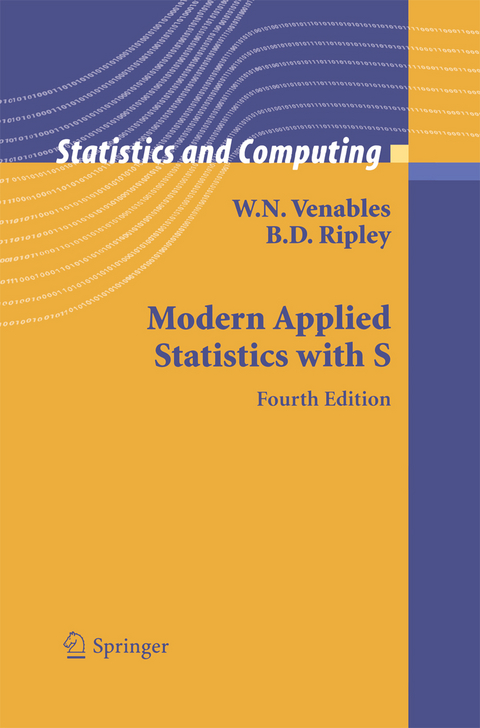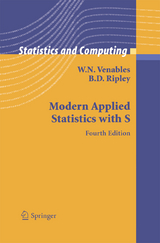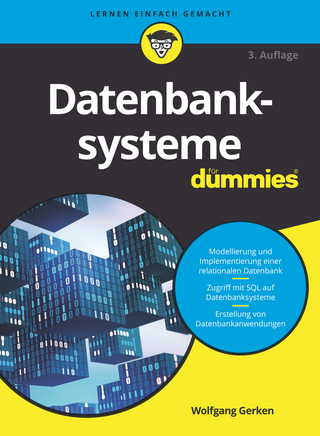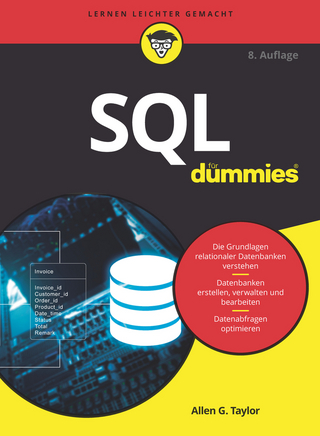Modern Applied Statistics with S
Springer-Verlag New York Inc.
978-0-387-95457-8 (ISBN)
S is a powerful environment for the statistical and graphical analysis
of data. It provides the tools to implement many statistical ideas
that have been made possible by the widespread availability of
workstations having good graphics and computational capabilities. This
book is a guide to using S environments to perform statistical
analyses and provides both an introduction to the use of S and a
course in modern statistical methods. Implementations of S are
available commercially in S-PLUS(R) workstations and as the Open
Source R for a wide range of computer systems.
The aim of this book is to show how to use S as a powerful and
graphical data analysis system. Readers are assumed to have a basic
grounding in statistics, and so the book is intended for would-be
users of S-PLUS or R and both students and researchers using
statistics. Throughout, the emphasis is on presenting practical
problems and full analyses of real data sets. Many of the methods
discussed are state of the art approaches to topics such as linear,
nonlinear and smooth regression models, tree-based methods,
multivariate analysis, pattern recognition, survival analysis, time
series and spatial statistics. Throughout modern techniques such as
robust methods, non-parametric smoothing and bootstrapping are used
where appropriate.
This fourth edition is intended for users of S-PLUS 6.0 or R 1.5.0 or
later. A substantial change from the third edition is updating for the
current versions of S-PLUS and adding coverage of R. The introductory
material has been rewritten to emphasis the import, export and
manipulation of data. Increased computational power allows even more
computer-intensive methods to be used, and methods such as GLMMs,
1 Introduction.- 1.1 A Quick Overview of S.- 1.2 Using S.- 1.3 An Introductory Session.- 1.4 What Next?.- 2 Data Manipulation.- 2.1 Objects.- 2.2 Connections.- 2.3 Data Manipulation.- 2.4 Tables and Cross-Classification.- 3 The S Language.- 3.1 Language Layout.- 3.2 More on S Objects.- 3.3 Arithmetical Expressions.- 3.4 Character Vector Operations.- 3.5 Formatting and Printing.- 3.6 Calling Conventions for Functions.- 3.7 Model Formulae.- 3.8 Control Structures.- 3.9 Array and Matrix Operations.- 3.10 Introduction to Classes and Methods.- 4 Graphics.- 4.1 Graphics Devices.- 4.2 Basic Plotting Functions.- 4.3 Enhancing Plots.- 4.4 Fine Control of Graphics.- 4.5 Trellis Graphics.- 5 Univariate Statistics.- 5.1 Probability Distributions.- 5.2 Generating Random Data.- 5.3 Data Summaries.- 5.4 Classical Univariate Statistics.- 5.5 Robust Summaries.- 5.6 Density Estimation.- 5.7 Bootstrap and Permutation Methods.- 6 Linear Statistical Models.- 6.1 An Analysis of Covariance Example.- 6.2 Model Formulae and Model Matrices.- 6.3 Regression Diagnostics.- 6.4 Safe Prediction.- 6.5 Robust and Resistant Regression.- 6.6 Bootstrapping Linear Models.- 6.7 Factorial Designs and Designed Experiments.- 6.8 An Unbalanced Four-Way Layout.- 6.9 Predicting Computer Performance.- 6.10 Multiple Comparisons.- 7 Generalized Linear Models.- 7.1 Functions for Generalized Linear Modelling.- 7.2 Binomial Data.- 7.3 Poisson and Multinomial Models.- 7.4 A Negative Binomial Family.- 7.5 Over-Dispersion in Binomial and Poisson GLMs.- 8 Non-Linear and Smooth Regression.- 8.1 An Introductory Example.- 8.2 Fitting Non-Linear Regression Models.- 8.3 Non-Linear Fitted Model Objects and Method Functions.- 8.4 Confidence Intervals for Parameters.- 8.5 Profiles.- 8.6 Constrained Non-Linear Regression.- 8.7 One-Dimensional Curve-Fitting.- 8.8 Additive Models.- 8.9 Projection-Pursuit Regression.- 8.10 Neural Networks.- 8.11 Conclusions.- 9 Tree-Based Methods.- 9.1 Partitioning Methods.- 9.2 Implementation in rpart.- 9.3 Implementation in tree.- 10 Random and Mixed Effects.- 10.1 Linear Models.- 10.2 Classic Nested Designs.- 10.3 Non-Linear Mixed Effects Models.- 10.4 Generalized Linear Mixed Models.- 10.5 GEE Models.- 11 Exploratory Multivariate Analysis.- 11.1 Visualization Methods.- 11.2 Cluster Analysis.- 11.3 Factor Analysis.- 11.4 Discrete Multivariate Analysis.- 12 Classification.- 12.1 Discriminant Analysis.- 12.2 Classification Theory.- 12.3 Non-Parametric Rules.- 12.4 Neural Networks.- 12.5 Support Vector Machines.- 12.6 Forensic Glass Example.- 12.7 Calibration Plots.- 13 Survival Analysis.- 13.1 Estimators of Survivor Curves.- 13.2 Parametric Models.- 13.3 Cox Proportional Hazards Model.- 13.4 Further Examples.- 14 Time Series Analysis.- 14.1 Second-Order Summaries.- 14.2 ARIMA Models.- 14.3 Seasonality.- 14.4 Nottingham Temperature Data.- 14.5 Regression with Autocorrelated Errors.- 14.6 Models for Financial Series.- 15 Spatial Statistics.- 15.1 Spatial Interpolation and Smoothing.- 15.2 Kriging.- 15.3 Point Process Analysis.- 16 Optimization.- 16.1 Univariate Functions.- 16.2 Special-Purpose Optimization Functions.- 16.3 General Optimization.- Appendices.- A Implementation-Specific Details.- A.1 Using S-PLUS under Unix / Linux.- A.2 Using S-PLUS under Windows.- A.3 Using R under Unix / Linux.- A.4 Using R under Windows.- A.5 For Emacs Users.- B The S-PLUS GUI.- C Datasets, Software and Libraries.- C.1 Our Software.- C.2 Using Libraries.- References.
| Reihe/Serie | Statistics and Computing |
|---|---|
| Zusatzinfo | XII, 498 p. |
| Verlagsort | New York, NY |
| Sprache | englisch |
| Maße | 155 x 235 mm |
| Themenwelt | Mathematik / Informatik ► Informatik ► Datenbanken |
| Mathematik / Informatik ► Mathematik ► Computerprogramme / Computeralgebra | |
| Mathematik / Informatik ► Mathematik ► Statistik | |
| Mathematik / Informatik ► Mathematik ► Wahrscheinlichkeit / Kombinatorik | |
| ISBN-10 | 0-387-95457-0 / 0387954570 |
| ISBN-13 | 978-0-387-95457-8 / 9780387954578 |
| Zustand | Neuware |
| Informationen gemäß Produktsicherheitsverordnung (GPSR) | |
| Haben Sie eine Frage zum Produkt? |
aus dem Bereich




